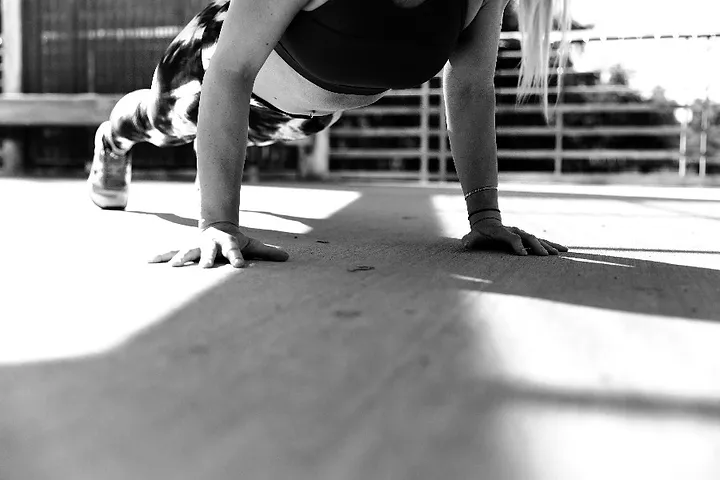In this article you will find:
Training for Beginners: Unleash Your Inner Athlete (Safely!)
The allure of a healthy and active lifestyle is undeniable. Whether it’s the desire to shed some pounds, boost energy levels, or simply feel the invigorating rush of exercise, the world of sports beckons. But for beginners, venturing into this realm can be daunting. Fear of injuries, lack of knowledge, and the sheer intimidation factor can often act as roadblocks on the path to fitness.
Here’s the good news: anyone, regardless of fitness level, can embark on a rewarding athletic journey. This comprehensive guide specifically caters to beginners, providing a roadmap to navigate the exciting world of sports safely and effectively. We’ll dispel common misconceptions, equip you with essential training principles, and suggest beginner-friendly exercises to get you started.
Dispelling the Myths: Stepping into Sports Without Fear
Many misconceptions surround the world of sports, particularly for beginners. Let’s address some of the most common myths and set the record straight:
- Myth #1: You Need to Be Naturally Athletic: This couldn’t be further from the truth. Everyone starts somewhere, and the key to success lies in consistent effort and gradual progression.
- Myth #2: Sports Are Only for the Young: Age is just a number. With proper guidance and a focus on low-impact activities initially, anyone can reap the benefits of exercising.
- Myth #3: Sports Are Time-Consuming: You can reap the rewards with time-efficient workouts. Even 30 minutes of moderate activity most days of the week can significantly improve your overall fitness.
- Myth #4: Sports Are All About Pain: Exercise shouldn’t be painful. If you experience discomfort, ease off the intensity or adjust your technique.
- Myth #5: You Need Fancy Equipment: You don’t need a gym membership or expensive equipment to get started. Many effective exercises require nothing more than your own body weight and a comfortable pair of shoes.
 Dispelling these myths is crucial. Sports should be an enjoyable and accessible path to a healthier you. Now, let’s dive into the fundamental principles that set beginners up for success.
Dispelling these myths is crucial. Sports should be an enjoyable and accessible path to a healthier you. Now, let’s dive into the fundamental principles that set beginners up for success.
Building a Strong Foundation: Essential Training Principles for Beginners
Laying a solid foundation is vital for any successful endeavor, and sports are no exception. Here are some key principles to guide you as a beginner:
Start Slow and Steady: Avoid diving headfirst into intense workouts. Begin with low-impact activities like brisk walking, swimming, or stationary cycling. Gradually increase the duration and intensity as your fitness improves.
Listen to Your Body: Your body is your best teacher. Pay attention to how you feel during and after exercise. Discomfort is a sign to adjust the intensity or duration of your workout. Don’t push yourself to the point of pain, which can lead to injuries.
Prioritize Proper Form: Focusing on proper technique is critical to avoid injuries and maximize the effectiveness of your workouts. Don’t be afraid to seek guidance from a certified trainer or fitness instructor who can help you master exercise techniques.
Warm-up and Cool-down: These aren’t just optional add-ons. A dynamic warm-up prepares your muscles for activity, while a cool-down with static stretches helps prevent soreness and promotes recovery.
Incorporate Rest and Recovery: Your body needs time to repair and rebuild muscle tissue. Schedule rest days between workouts and ensure you get adequate sleep. Overtraining can lead to fatigue and hinder your progress.
Hydration is Key: Staying hydrated is crucial for optimal performance and recovery. Drink plenty of water before, during, and after your workouts.
Find an Activity You Enjoy: This might sound obvious, but choosing an activity you find fun is essential for long-term commitment. Explore different sports and find something you genuinely look forward to doing.
Celebrate Your Achievements: Acknowledge your progress, no matter how small. Celebrate milestones and reward yourself for reaching your fitness goals. Keeping yourself motivated is key!
By adhering to these principles, you can embark on your sports journey with confidence, minimizing the risk of injuries and maximizing your chances of long-term success. Now, let’s explore some fantastic beginner-friendly exercises that can kickstart your fitness adventure!
 Beginner-Friendly Exercises: Unleashing Your Inner Athlete Safely
Beginner-Friendly Exercises: Unleashing Your Inner Athlete Safely
Equipping yourself with a repertoire of beginner-friendly exercises is crucial for crafting an effective and safe workout routine. Here are some fantastic options to get you started:
Cardiovascular Exercises:
- Brisk Walking: This low-impact activity is a fantastic starting point. Start with short walks and gradually increase the duration and intensity as your fitness improves.
- Swimming: Swimming is a full-body exercise that’s gentle on your joints. It’s perfect for beginners and offers a refreshing way to get your heart rate up.
- Stationary Cycling: This low-impact activity allows you to control the intensity and provides a great cardio workout.
- Elliptical Training: This machine simulates stair climbing with minimal impact on your joints. It’s a great way to elevate your heart rate and improve cardiovascular endurance.
Strength Training Exercises:
- Bodyweight Squats: Squats work your major muscle groups, including your quads, glutes, and core. Start with bodyweight squats and progress to weighted squats as you build strength.
- Lunges: Great for working your legs and core, lunges can be performed forward, backward, or even side-to-side. Focus on maintaining proper form to maximize effectiveness.
- Push-ups (modified): Push-ups can be challenging initially. But modified versions, like wall push-ups or incline push-ups, are a fantastic option for beginners to build upper body strength.
- Plank: This isometric exercise engages your core, shoulders, and back muscles. Start by holding a plank for short durations and gradually increase the hold time as you get stronger.
Remember: When starting strength training, it’s crucial to choose a weight that allows you to maintain proper form throughout the exercise. Begin with lighter weights and gradually increase them as you get stronger.
Additional Considerations:
- Incorporate Flexibility Training: Regular stretching improves your range of motion and reduces the risk of injury. Aim for static stretches that target major muscle groups after your workouts.
- Group Fitness Classes: Consider joining beginner-friendly group fitness classes like Zumba or yoga. This can be a fun and motivating way to get started with exercise in a social setting.
- Seek Professional Guidance: Don’t hesitate to seek guidance from a certified personal trainer or physical therapist. They can create a personalized workout program tailored to your fitness level and goals.
These are just a few examples, and there are countless other exercises you can explore. The key is to find activities you enjoy and gradually challenge yourself as your fitness level improves. Now that you’re armed with the knowledge and exercises to get started, let’s explore some additional tips to ensure your journey towards a healthy and active lifestyle is a smooth and successful one.


 Beginner-Friendly Exercises: Unleashing Your Inner Athlete Safely
Beginner-Friendly Exercises: Unleashing Your Inner Athlete Safely

